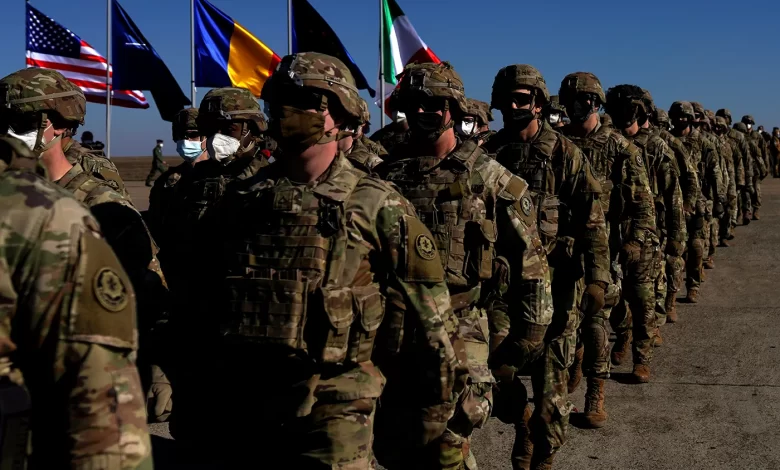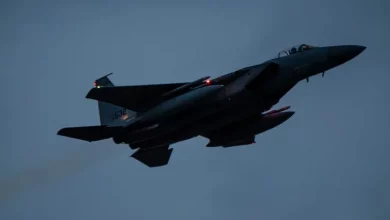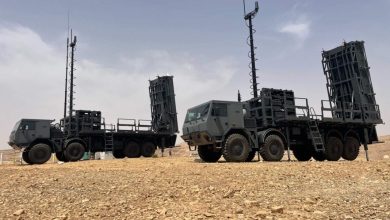Analysis: NATO’s decisive comeback in 2022

War in Ukraine led to re-emergence of alliance as most essential pillar of European security
2022 was perhaps the most decisive year for NATO since the early 1980s, when the Cold War was re-escalated as a result of the Soviet invasion of Afghanistan, US President Ronald Reagan’s launch of the Strategic Defense Initiative, and Washington’s deployment of nuclear-armed Pershing II missiles in Europe.
On the eve of the Russian war against Ukraine on Feb. 24, there were already grave challenges and uncertainty surrounding the future of the EU and its relationship with NATO.
While former US President Donald Trump was pushing EU countries, most of which are also NATO members, to significantly increase their defense expenditures, Germany was on the course to even further deepen its dependency on Russian energy via the NordStream 2 pipeline and the French president called NATO brain dead.
These added to never-ending discussions on the need for strategic autonomy of the EU, which has foreseen an important role for Russia within the new security architecture and over-ambitious plans for an EU army, which would have rendered NATO a relic of the past.
However, the war resolutely showed the EU’s weakness as a hard power and NATO is the only deterrent instrument the old continent has against Russia.
Russian attack on Ukraine and re-vitalization of NATO
Increasingly alarmed by the risk of war, partly due to American intelligence that warned of the immediate Russian attack on Ukraine, the alliance met Russia in the framework of the NATO-Russia Council on Jan. 12 to discuss the situation in and around Ukraine.
At the meeting, Russia insisted that NATO halt accepting new members and withdraw forces from eastern European members of the alliance. NATO, however, reiterated that it remains committed to an “open door” policy and each nation’s right to decide its security arrangements.
That said, NATO Secretary General Jens Stoltenberg announced Jan. 26 the alliance’s willingness to intensify dialogue in good faith with Russia to address major issues, including arms control, risk reduction and transparency of military exercises.
Around the same time, NATO members hastened military aid to Ukraine. On Jan. 20, the US authorized third-party transfers from 14 NATO allies and partners to send US-origin equipment, including state-of-art javelin anti-tank and stinger anti-aircraft missiles to Ukraine.
Furthermore, by mid-February, the UK sent 2,000 NLAWS anti-tank missiles and dozens of Saxon armored vehicles, and Poland shipped Piorun air-aircraft missiles and a vast amount of ammunition to Ukraine. To counter intensified Russian cyberattacks on Ukrainian government websites from January onwards, NATO also gave Kyiv access to the alliance’s malware information-sharing platform.
When Russia finally commenced its attack Feb. 24, it was disciplined, motivated and resilient Ukrainian forces who shattered the Russian vision of a swift victory. It became obvious that NATO endeavors of the post-2014 era to amplify Ukraine’s military capacity through trust funds, the Defense Education Enhancement Program and the Comprehensive Assistance Package paid dividends.
NATO’s first reaction to “the gravest threat to Euro-Atlantic security in decades” was a Feb. 25 virtual meeting of NATO heads of state and governments, to which non-members Finland and Sweden were also invited. The alliance reiterated in a statement that it does not seek a confrontation with Russia but supported Ukraine’s right to defend itself.
As such, NATO members further hastened their supply of arms and ammunition to Ukraine immediately after the breakout of the war. The US authorization of immediate security assistance on Feb. 25 was quickly followed by other members, which endorsed the transfer of vast amounts of much-needed anti-tank weapons, howitzers, armored vehicles and air-defense systems.
Moreover, on April 26, the US-led Ukrainian Contract Group, which included many NATO members, was formed to coordinate military and humanitarian assistance to Kyiv. The group has met every month since its opening meeting.
Meanwhile, in response to the worsening humanitarian situation and reports of mistreatment of civilians by Russian troops in Ukraine, NATO’s Parliamentary Assembly, in its spring session May 27 – 30 in the Lithuanian capital of Vilnius, adopted the Standing with Ukraine declaration, which called for a special ad hoc international criminal tribunal to investigate and prosecute the crime of aggression against Ukraine and called member countries to continue “building a strong coalition to support Ukraine with all possible assistance.”
Madrid Summit’s endeavor to shape future of NATO
The alliance, in the Madrid Summit on July 29-30, agreed to increase direct support for Ukraine through the Comprehensive Assistance Package that would contain non-lethal defense equipment, tools to augment Ukraine’s cyber defenses and resilience among other kinds of support. It also committed to aiding Ukraine in its eventual post-war reconstruction and reforms.
NATO also endorsed the new Strategic Concept for the alliance to address new global challenges and threats and agreed to launch the NATO Innovation Fund.
Another ground-breaking decision taken during the summit was the invitation of Sweden and Finland to become members of the alliance.
In a related development, Türkiye, Finland, and Sweden, on the sidelines of the summit, signed a memorandum on the Nordic countries’ bids for membership. The memorandum requires Finland and Sweden to take steps on Türkiye’s terrorism concerns, including the extradition of terror suspects and to lift an arms embargo for Türkiye’s approval of their membership to the alliance, in return.
Following Moscow’s decision to hold referendums to illegally annex the Ukrainian territories of Kherson, Zaporizhia, Donetsk, and Luhansk, into Russia, NATO’s Parliamentary Assembly President Gerald E. Connolly condemned the act on Sept. 30 as a “serious and dangerous escalation,” that will never be recognized.
In the foreign ministers’ meeting of Nov. 29 – 30 in the Romanian capital city of Bucharest, NATO reiterated that Russia is responsible for the war in Ukraine, bears all related liability and condemned the Russian attack on Ukraine’s energy infrastructure and civilian population.
Vowing to further step up the political and practical support to Ukraine, the alliance said it will also get Kyiv to help in repairing its energy infrastructure, all in coordination with relevant stakeholders, including international organizations, in particular the EU, as well as like-minded countries. NATO, besides, drew attention to the importance of the Western Balkans and the Black Sea region to the alliance and reaffirmed its commitment to the Open Door Policy.
To sum up, in 2022, NATO once again proved its significance for the Euro-Atlantic security architecture and the fact that it is the only deterrent tool Europe has to cope with the new realities of the world.





